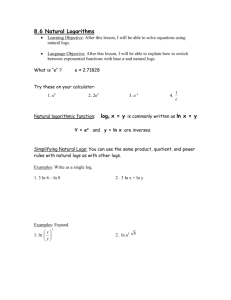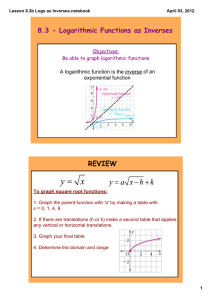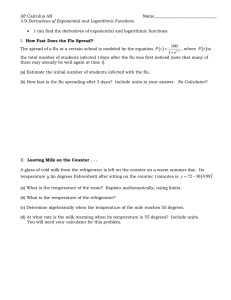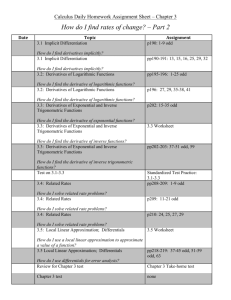PS16
advertisement
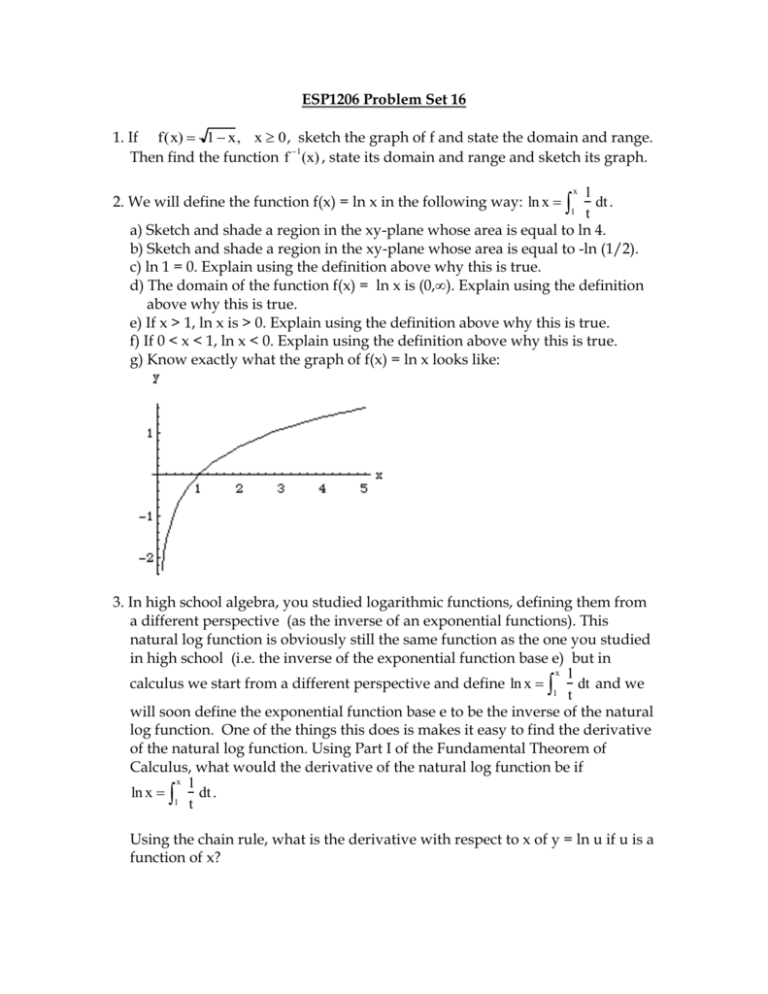
ESP1206 Problem Set 16 1. If f(x) 1 x, x 0 , sketch the graph of f and state the domain and range. Then find the function f 1 (x) , state its domain and range and sketch its graph. 1 dt . t a) Sketch and shade a region in the xy-plane whose area is equal to ln 4. b) Sketch and shade a region in the xy-plane whose area is equal to -ln (1/2). c) ln 1 = 0. Explain using the definition above why this is true. d) The domain of the function f(x) = ln x is (0,∞). Explain using the definition above why this is true. e) If x > 1, ln x is > 0. Explain using the definition above why this is true. f) If 0 < x < 1, ln x < 0. Explain using the definition above why this is true. g) Know exactly what the graph of f(x) = ln x looks like: x 2. We will define the function f(x) = ln x in the following way: ln x 1 3. In high school algebra, you studied logarithmic functions, defining them from a different perspective (as the inverse of an exponential functions). This natural log function is obviously still the same function as the one you studied in high school (i.e. the inverse of the exponential function base e) but in x 1 calculus we start from a different perspective and define ln x dt and we 1 t will soon define the exponential function base e to be the inverse of the natural log function. One of the things this does is makes it easy to find the derivative of the natural log function. Using Part I of the Fundamental Theorem of Calculus, what would the derivative of the natural log function be if x 1 ln x 1 dt . t Using the chain rule, what is the derivative with respect to x of y = ln u if u is a function of x? Find the derivative of each of the following functions: ln x a) f(x) ln(x 2 1) b) g(x) x ln(2x 3) c) h(x) x 4. The properties of logarithms which you should be familiar with from precalculus are: 1) ln(mn) = ln m + ln n (The log of the product is the sum of the logs.) 2) ln (m/n) = ln m - ln n (The log of the quotient is the difference of the logs.) 3) ln mn n ln m (Note: These properties are true for any logarithmic function, not just natural logs.) a) Using these properties write in the following logarithmic expression in terms of the natural logs of a,b, and c: a 2b ln c b) Using these properties, write the following expression as a single natural logarithm: 1 2 lna ln b 4 ln c 3 d(ln | x |) 1 . This gives us a new antiderivative dx x 1 1 formula also: dx ln | x | C or stated in terms of u, du ln | u | C . Use x u this and/or other antiderivative formulas to evaluate: x2 (ln x) 2 sint 1 a) 3 b) c) dx dx dt dx d) x 1 x cos t 3 1 2x 5. It can be shown that 6. Set up integrals to find the volume of the solid obtained when the region bounded by the graphs of y = ln x, y = 0 and x = 3 is rotated about a) the line y = 0 b) the line x = 8 c) the line y = 5
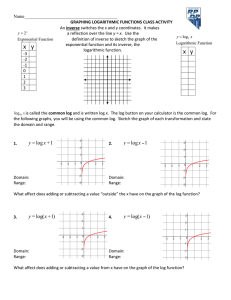
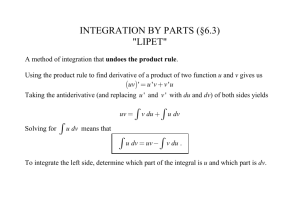


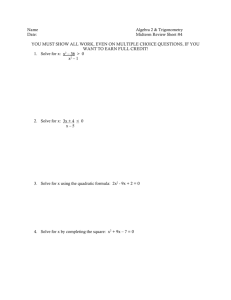

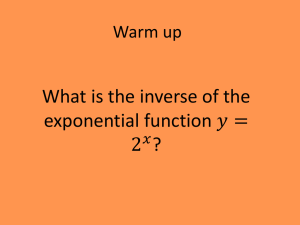
![Antiderivatives [7.5]](http://s2.studylib.net/store/data/009839726_1-71c8c3c8e7789734542b65fee1d9e6d4-300x300.png)
